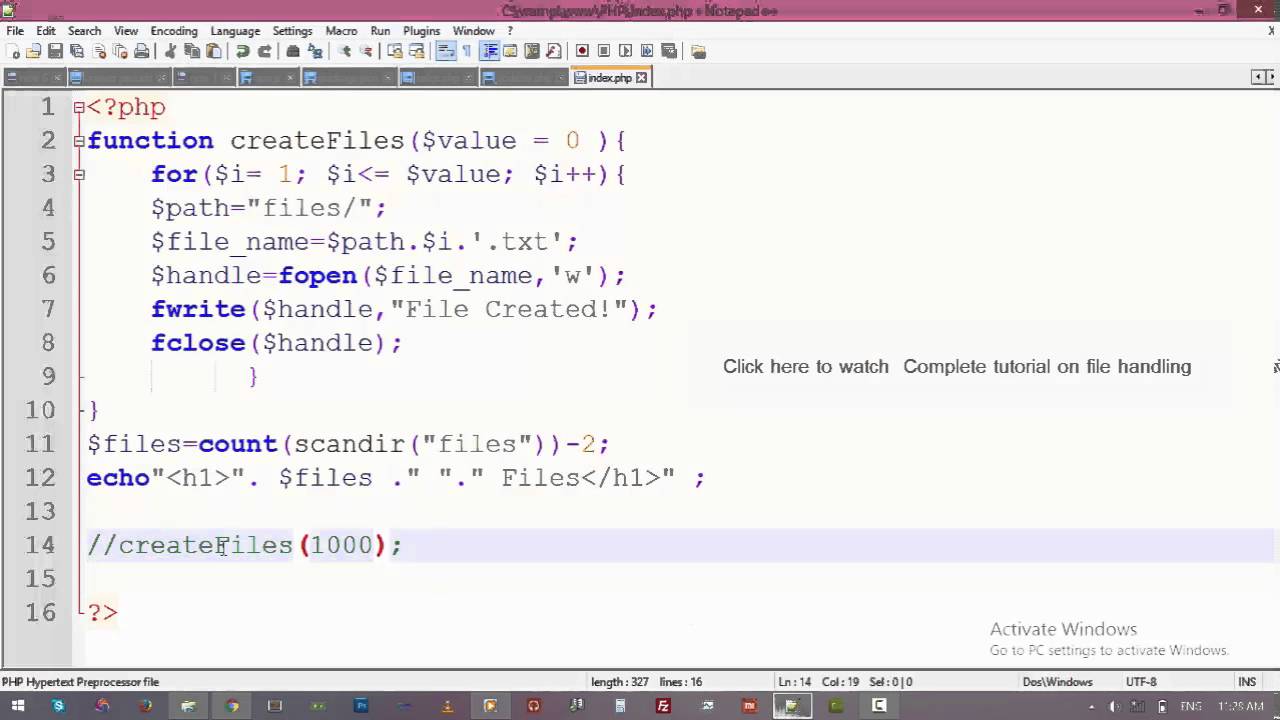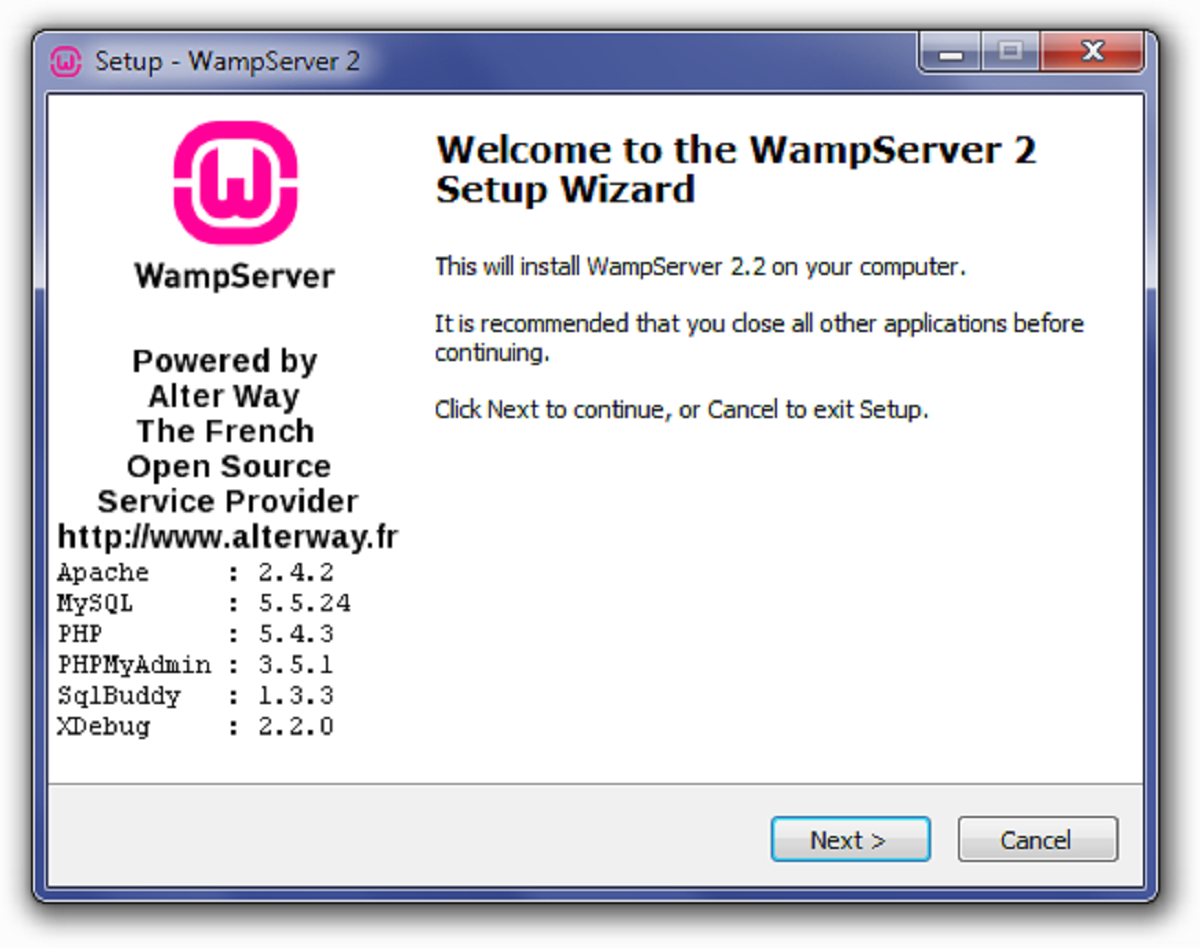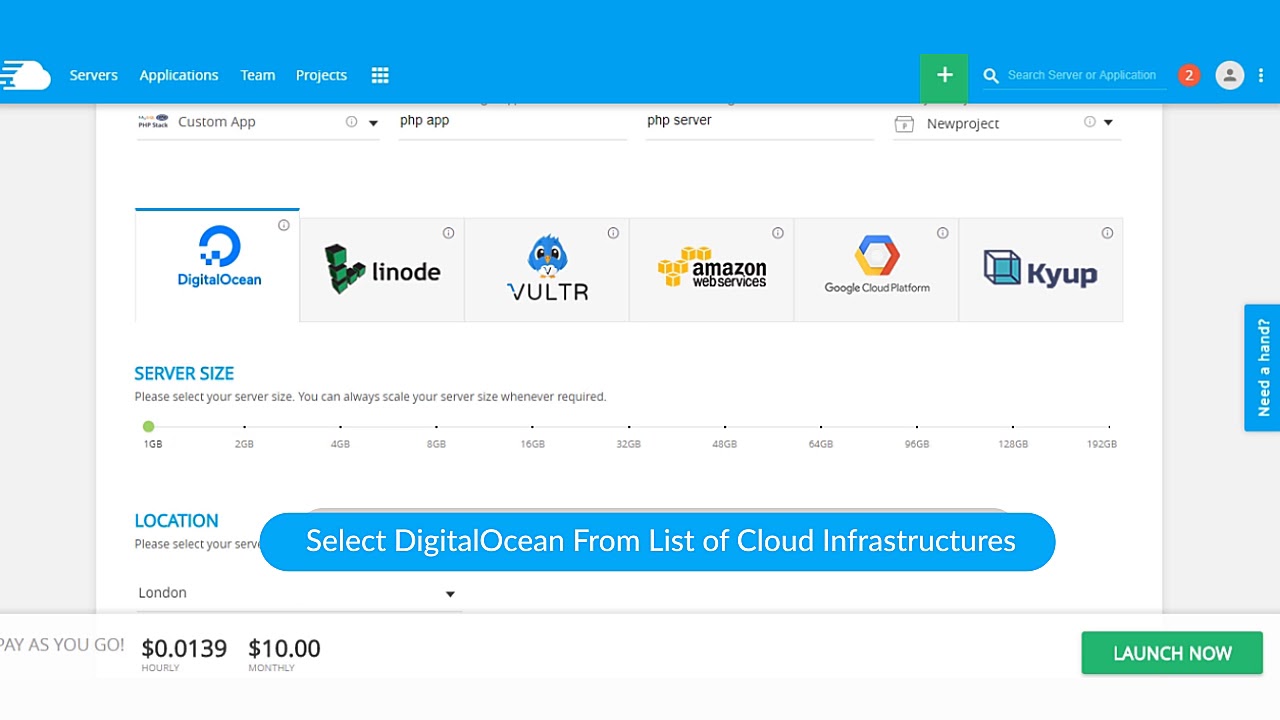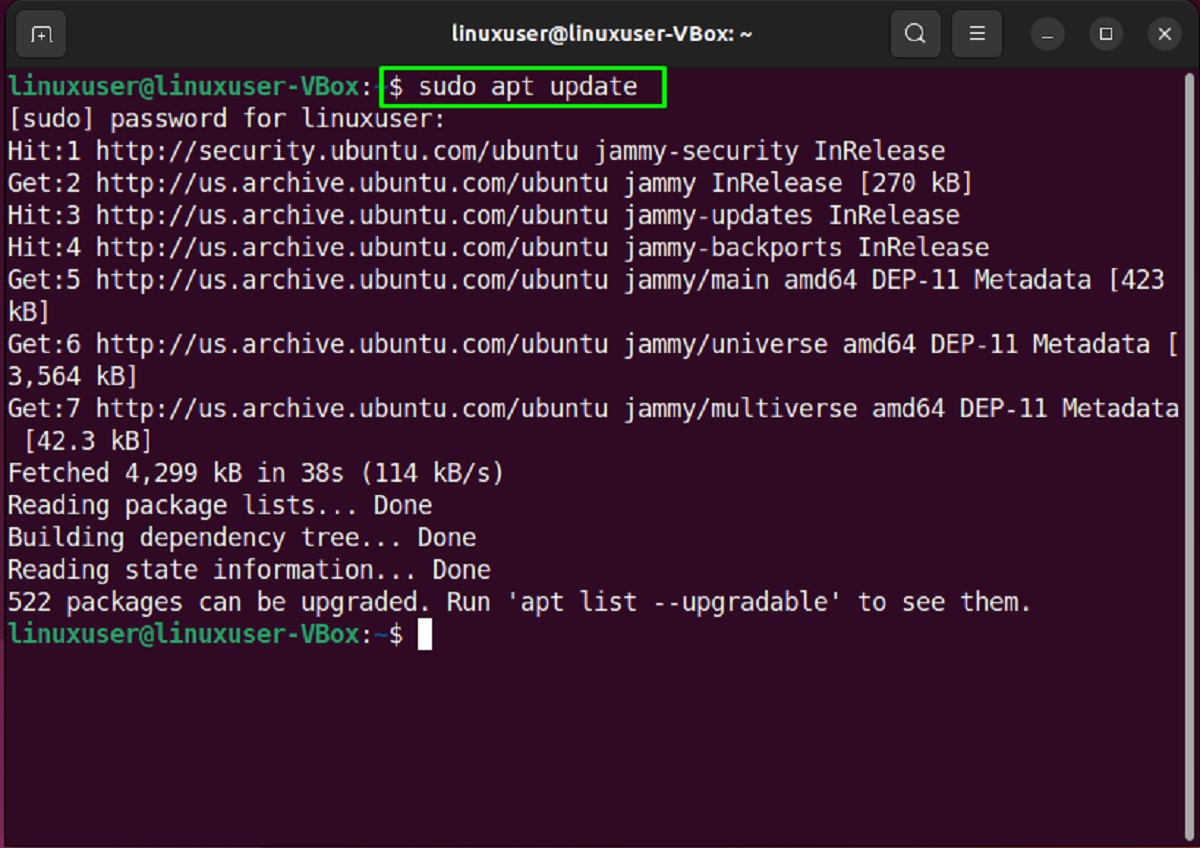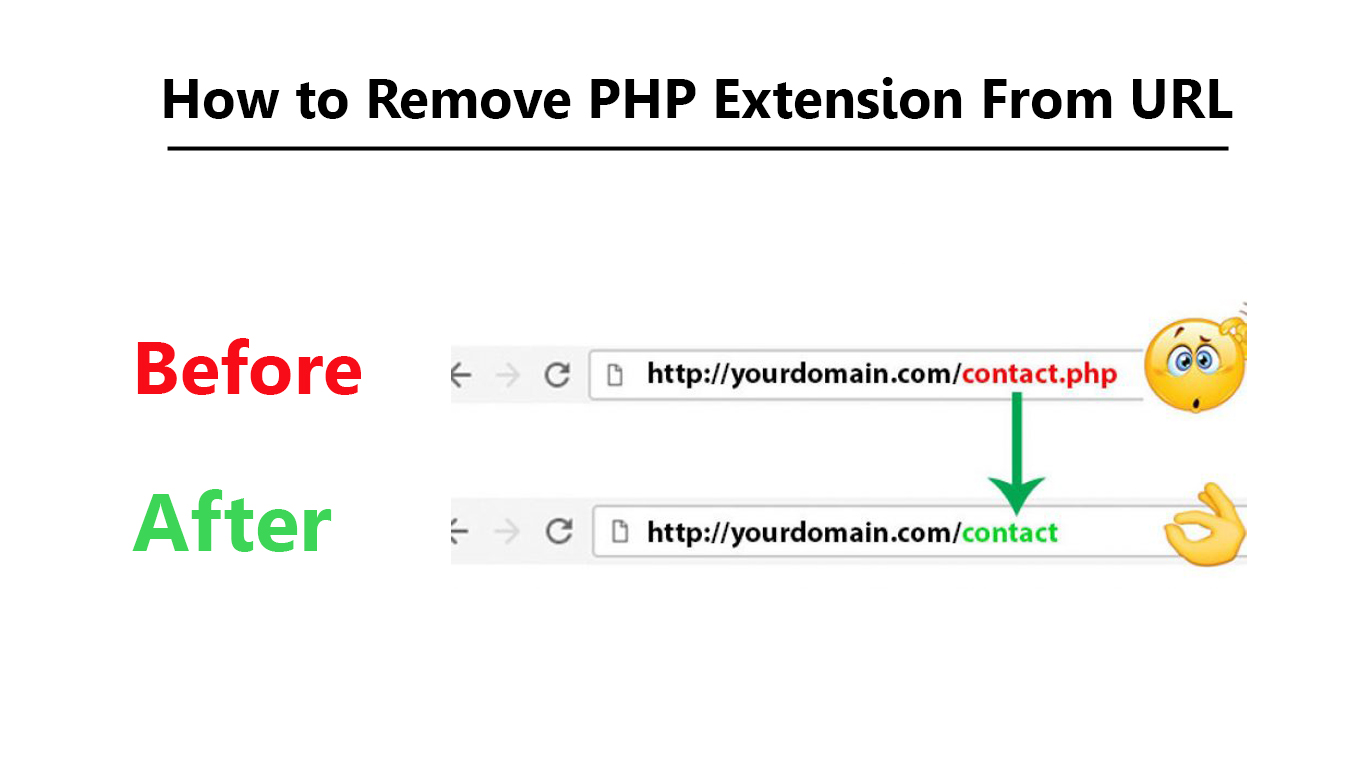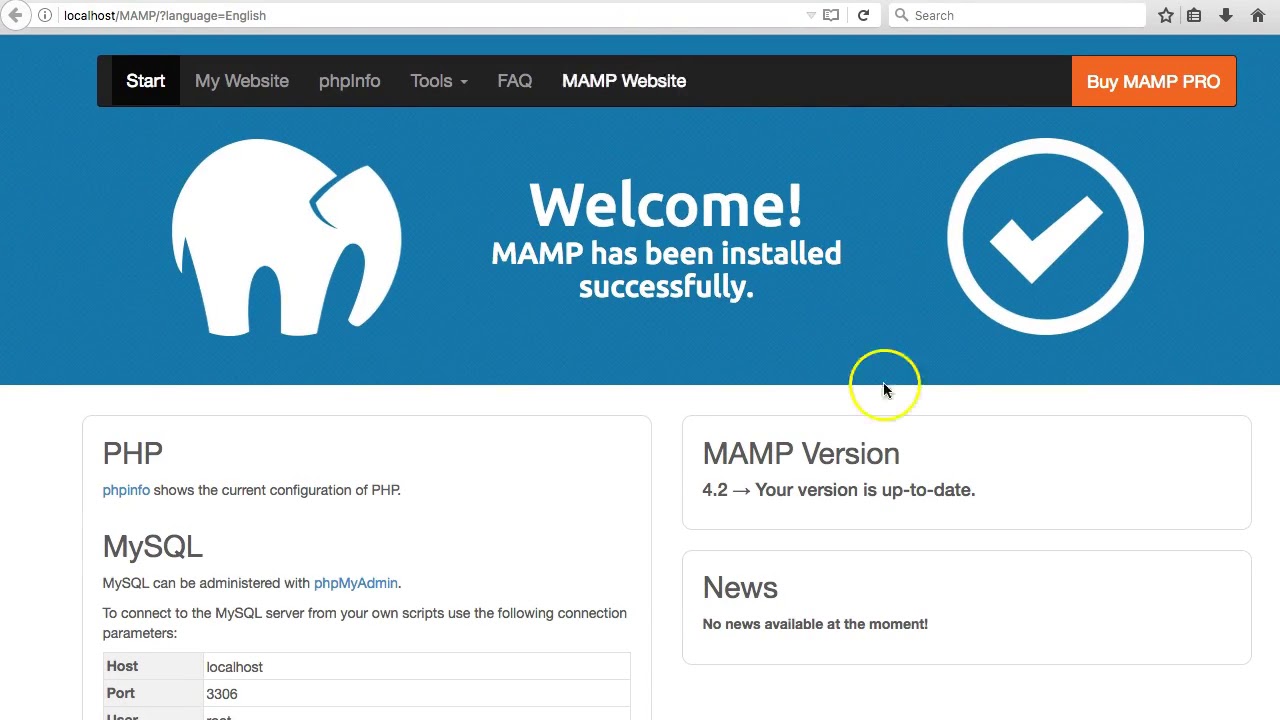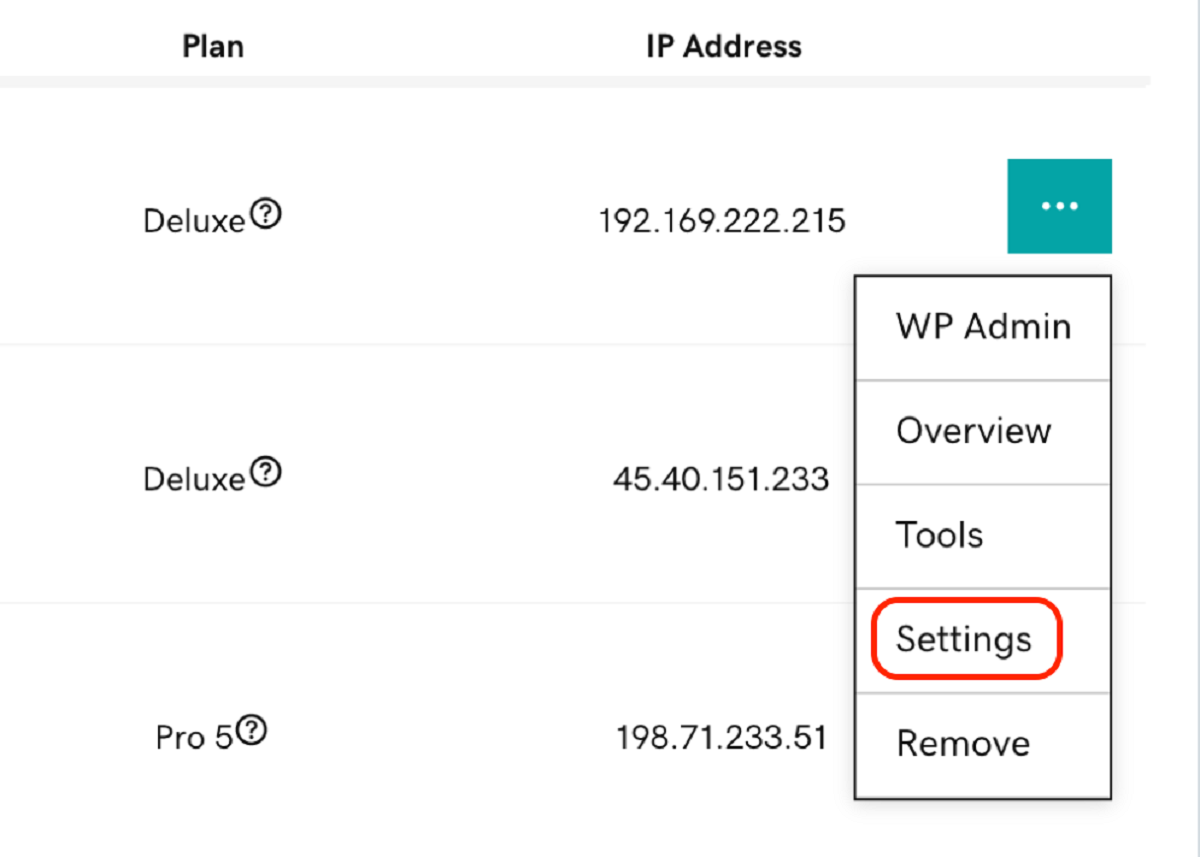Introduction
Welcome to the world of PHP! Whether you are a beginner or have some experience in programming, this article will guide you on how to create a PHP file from scratch. PHP, which stands for Hypertext Preprocessor, is a popular server-side scripting language used primarily for web development. It allows you to create dynamic and interactive web pages that can interact with databases, handle form submissions, and perform various calculations.
In this article, we will take you through the process of setting up your PHP environment, writing your first PHP file, understanding the basic syntax, working with variables and data types, manipulating files, and much more. By the end of this article, you will have a solid foundation in PHP development and be ready to take on more complex projects.
Before we dive into the technical details, it’s important to note that having a basic understanding of HTML and web development concepts will greatly benefit your learning journey. However, even if you are new to programming, don’t worry! We will break down the concepts and provide clear explanations along the way.
So, get ready to embark on this PHP adventure. Whether you are aiming to build a dynamic website, enhance your programming skills, or explore the world of web development, PHP is a powerful tool that will open up endless possibilities.
Without further ado, let’s begin the journey of creating your first PHP file!
What is PHP?
PHP, which stands for Hypertext Preprocessor, is a server-side scripting language that is widely used for web development. It was originally created by Rasmus Lerdorf in 1994 and has since evolved into a robust programming language. PHP is open-source and supported by a vast community of developers, making it one of the most popular choices for building dynamic and interactive websites.
One of the key features of PHP is its ability to seamlessly integrate with HTML, allowing developers to embed PHP code directly within HTML pages. This unique feature enables the creation of dynamic web pages that can generate custom content, interact with databases, handle user input, and perform various other tasks.
PHP offers a wide range of functions and libraries, allowing developers to write clean and efficient code. It supports multiple platforms, including Windows, Linux, macOS, and Unix, making it highly versatile. Additionally, PHP is compatible with the majority of web servers and can be used alongside popular databases such as MySQL and PostgreSQL.
There are several reasons why PHP has become a preferred choice for web development:
- Simplicity: PHP is known for its simplicity and ease of use. Its syntax is similar to C and Perl, making it relatively straightforward to learn for those with programming experience.
- Flexibility: PHP offers great flexibility, allowing developers to create both simple scripts and complex applications. It supports a wide range of programming paradigms, including procedural, object-oriented, and functional programming.
- Speed and Performance: PHP has undergone significant performance optimizations over the years, resulting in faster execution times. It also offers built-in caching mechanisms and supports various caching extensions, further enhancing performance.
- Extensive Community and Resources: The PHP community is vast and active, providing developers with access to numerous libraries, frameworks, and resources. This helps streamline development and allows for easy collaboration and support.
Overall, PHP is a powerful and versatile programming language that empowers developers to create dynamic and interactive web applications. Its simplicity, flexibility, and extensive community support make it an excellent choice for web development projects of all sizes. In the next section, we will guide you through the process of setting up your PHP environment.
Setting Up Your Environment
Before you start creating PHP files, you need to set up your development environment. Here are the steps to get you up and running:
- Install a Local Server: To run PHP code on your computer, you will need a local server environment. There are several options available, such as XAMPP, WampServer, and MAMP. These tools provide a package that includes PHP, Apache web server, and MySQL database server. Choose the one that is compatible with your operating system and follow the installation instructions.
- Create a Project Directory: Once you have your local server set up, create a folder on your computer where you will store all your PHP files. This will serve as your project directory.
- Start the Local Server: Open the local server software you installed and start the server. This will launch the Apache web server and make it ready to serve your PHP pages.
- Verify the Installation: Open your web browser and type
http://localhostin the address bar. If everything is set up correctly, you should see the default page of your local server. - Configure the Server: Depending on your server software, you may need to configure the document root to point to your project directory. This ensures that when you access
http://localhost, the server knows where to find your PHP files.
With your environment set up, you are now ready to start creating PHP files and see them in action. In the next section, we will dive into the basics of writing PHP code and understanding the syntax.
Writing Your First PHP File
Now that your development environment is set up, it’s time to write your first PHP file. Follow these steps to get started:
- Create a New File: Open a text editor of your choice and create a new file. Save it with a .php extension. For example, you can name it
first.php. - Opening and Closing PHP Tags: Inside the file, start by opening the PHP tags:
<?php. This tells the server that the following code is PHP. Remember to close the PHP tags with?>at the end of the file. - Write PHP Code: Inside the PHP tags, you can start writing your PHP code. For example, you can use the
echostatement to print out a message on the web page.
Here is an example of a basic PHP file that prints out a “Hello, World!” message:
php
Save the file and navigate to it using your web browser. You can do this by accessing http://localhost/your-file-name.php in the address bar. If everything is set up correctly, you should see the output displayed on the page.
Congratulations! You have successfully created and executed your first PHP file. From here, you can continue to explore and experiment with various PHP features and functionalities.
In the next section, we will delve into the basic syntax of PHP to gain a better understanding of how to write PHP code effectively.
Basic PHP Syntax
Understanding the basic syntax of PHP is essential for writing clean and structured code. Let’s explore the fundamental elements of PHP syntax:
- Opening and Closing Tags: PHP code is enclosed within opening and closing tags. The opening tag is
<?phpand the closing tag is?>. These tags indicate to the server that the code within them should be interpreted as PHP code. - Comments: Like many other programming languages, PHP allows you to add comments to your code. Comments provide explanatory notes and are ignored by the PHP interpreter. Single-line comments start with
//and block comments are enclosed between/*and*/. - Statements: PHP code consists of a series of statements. Each statement is terminated with a semicolon (
;). Statements are executed sequentially, one after another. - Variables: In PHP, variables are used to store data and give it a meaningful name. Variables start with a dollar sign (
$) followed by the variable name. PHP is dynamically typed, meaning you don’t need to declare the data type explicitly. - Output: The
echostatement is used to output text or variables to the web page. It is one of the most common ways to display content generated by PHP.
Here is an example that demonstrates the basic PHP syntax:
php
When this code is executed, the output will be:
My name is John and I am 25 years old.
Understanding and practicing the basic syntax will provide a solid foundation for your PHP coding journey. In the next section, we will explore variables and data types in more detail, allowing you to work with different types of data in your PHP programs.
Variables and Data Types
In PHP, variables are used to store and manipulate data. Understanding how variables work and the different data types available in PHP is essential for building dynamic applications. Let’s explore variables and data types in PHP:
Creating Variables: In PHP, variables are created by using the dollar sign ($) followed by the variable name. Variable names are case-sensitive and must start with a letter or an underscore. They can contain letters, numbers, and underscores.
Assigning Values: To assign a value to a variable, use the assignment operator (=). The value can be of any data type.
Data Types in PHP: PHP supports several data types:
- String: Represents a sequence of characters, enclosed in single quotes (
' ') or double quotes (" "). - Integer: Represents whole numbers without decimal points.
- Float: Represents numbers with decimal points.
- Boolean: Represents the logical values
trueorfalse. - Array: Represents an ordered collection of values.
- Object: Represents an instance of a user-defined class.
- Null: Represents a variable with no value assigned to it.
Type Casting: PHP allows you to convert values from one data type to another. This can be done implicitly or explicitly using type casting functions.
Here is an example that demonstrates the usage of variables and data types:
php
“;
echo “Age: “.$age.”
“;
echo “Height: “.$height.”m
“;
echo “Student: “.$isStudent.”
“;
echo “Skills: “.implode(“, “, $skills).”
“;
?>
When this code is executed, the output will be:
Name: John
Age: 25
Height: 1.75m
Student: 1
Skills: HTML, CSS, JavaScript
By understanding the concept of variables and the different data types available in PHP, you have gained the knowledge needed to store and manipulate data in your PHP programs. In the next section, we will explore comments and their importance in PHP development.
Comments
Comments play a crucial role in PHP development by providing explanatory notes and helping other developers understand your code. They are ignored by the PHP interpreter and have no impact on the code’s functionality. Let’s explore how comments are used in PHP:
Single-line comments: Single-line comments are used to provide short, inline explanations within the code. They start with two forward slashes (//) and continue until the end of the line. These comments are useful for adding quick clarifications or reminders.
Example:
php
// This is a single-line comment
Multi-line comments: Multi-line comments are used for longer explanations or to comment out blocks of code. They start with /* and end with */. Multi-line comments can span across multiple lines and are useful for documenting complex code sections or temporarily disabling code.
Example:
php
/*
This is a multi-line comment.
It can span across multiple lines.
Useful for longer explanations or to comment out code sections.
*/
Comments provide several benefits in PHP development:
- Code Understandability: Comments improve code readability and help other developers understand your logic, especially in complex or heavily documented code.
- Maintenance: Comments make it easier to maintain and update code in the future. They act as a roadmap for understanding the purpose and functionality of different sections.
- Collaboration: Comments facilitate collaboration within a team by providing insights into the code’s design and functionality. They help other developers understand your intentions and make it easier to work together.
- Troubleshooting: Comments can be valuable during troubleshooting. By adding comments to specific code sections, you can pinpoint potential issues or make notes for future debugging.
It is good practice to include comments throughout your code, explaining the purpose of variables, functions, and complex algorithms. However, it is important to balance the use of comments with the clarity and readability of your code.
Now that you understand the importance of comments in PHP development, let’s move on to the next section where we will explore how to print output using the echo statement.
Printing Output
When working with PHP, printing output is an essential part of the development process. The echo statement allows you to display content on the web page or in the console. Let’s explore how to use echo to print output in PHP:
Printing Text: To print out text or strings, enclose the content in quotes (single or double) and use the echo statement.
Example:
php
echo “Hello, World!”;
This will display:
Hello, World!
Printing Variables: In addition to printing text, you can also print the value of variables using echo. Simply concatenate the variable with the desired string using the dot operator (.)
Example:
php
$name = “John”;
echo “Hello, ” . $name . “!”;
This will display:
Hello, John!
Printing HTML: Since PHP is often used in conjunction with HTML, you can use echo to print both HTML tags and the dynamic PHP content within them.
Example:
php
$name = “John”;
$age = 25;
echo “
Welcome, ” . $name . “!
“;
echo “
You are ” . $age . ” years old.
“;
This will display:
Welcome, John!
You are 25 years old.
Remember that echo is a language construct and not a function, so the parentheses are optional. However, it’s good practice to use parentheses for clarity and consistency.
In addition to echo, PHP also provides other output functions like print and printf. These functions have slightly different features and use cases, but echo is generally the most commonly used method for printing output in PHP.
With the ability to print output, you can easily display dynamic content on your web page or console. In the next section, let’s explore operators in PHP and how they can be used in your code.
Operators
In PHP, operators are used to perform various operations on data, such as arithmetic calculations, comparisons, logical operations, and more. Understanding and utilizing operators is essential for manipulating and manipulating data effectively. Let’s explore different types of operators in PHP:
Arithmetic Operators: Arithmetic operators are used to perform basic mathematical calculations. PHP supports the following arithmetic operators:
+Addition: Adds two values together-Subtraction: Subtracts the second value from the first*Multiplication: Multiplies two values/Division: Divides the first value by the second%Modulus: Returns the remainder of the division**Exponentiation: Raises the first value to the power of the second
Assignment Operators: Assignment operators are used to assign values to variables. PHP supports the following assignment operators:
=Assign: Assigns a value to a variable+=Add and Assign: Adds the value to the variable and assigns the result-=Subtract and Assign: Subtracts the value from the variable and assigns the result*=Multiply and Assign: Multiplies the variable by the value and assigns the result/=Divide and Assign: Divides the variable by the value and assigns the result%=Modulus and Assign: Applies the modulus operation and assigns the result
Comparison Operators: Comparison operators are used to compare two values, returning either true or false. PHP supports the following comparison operators:
==Equal to: Returnstrueif the two values are equal!=Not equal to: Returnstrueif the two values are not equal>Greater than: Returnstrueif the first value is greater than the second<Less than: Returnstrueif the first value is less than the second>=Greater than or equal to: Returnstrueif the first value is greater than or equal to the second<=Less than or equal to: Returnstrueif the first value is less than or equal to the second
Logical Operators: Logical operators are used to evaluate the truth or falsehood of multiple conditions. PHP supports the following logical operators:
andor&&And: Returnstrueif both conditions are trueoror||Or: Returnstrueif either of the conditions is true!Not: Negates the truth value of a condition
These are just a few examples of the operators available in PHP. There are many more, including bitwise operators, string operators, and more. Understanding these operators is essential for performing various operations on your data and controlling the flow of your PHP code.
With a solid understanding of operators, you'll be able to manipulate and compare data effectively in your PHP programs. In the next section, we will explore conditional statements and how they are used to control the flow of your code.
Conditional Statements
Conditional statements allow you to control the flow of your code based on different conditions. They enable your program to make decisions and execute specific blocks of code depending on the evaluation of certain conditions. In PHP, conditional statements are commonly implemented using the if, else if, and else constructs. Let's explore how these conditional statements work:
The if statement: The if statement is used to execute a block of code if a specific condition is true. If the condition evaluates to true, the code block within the if statement is executed. If the condition is false, the code block is skipped.
Example:
php
$age = 25;
if ($age >= 18) {
echo "You are an adult.";
}
If the value of the $age variable is 25, the output will be:
You are an adult.
The if-else statement: The if-else statement allows you to execute different blocks of code based on the evaluation of a condition. If the condition is true, the code block within the if statement is executed. If the condition is false, the code block within the else statement is executed.
Example:
php
$age = 15;
if ($age >= 18) {
echo "You are an adult.";
} else {
echo "You are a teenager.";
}
If the value of the $age variable is 15, the output will be:
You are a teenager.
The elseif statement: The elseif statement allows you to check multiple conditions in succession. It is used when there are more than two possible outcomes. If the initial condition is false, it moves to the next condition and evaluates it. If the condition is true, the corresponding code block is executed and the subsequent conditions are skipped.
Example:
php
$hour = 14;
if ($hour < 12) { echo "Good morning!"; } elseif ($hour < 18) { echo "Good afternoon!"; } else { echo "Good evening!"; }
If the value of the $hour variable is 14, the output will be:
Good afternoon!
Conditional statements are powerful tools for controlling the flow of your code based on specific conditions. They enable your program to make decisions dynamically. By utilizing if, else if, and else, you can create complex branching logic to handle a wide range of scenarios in your PHP programs.
In the next section, we will explore loops and how they can be used to repeat sections of code multiple times.
Loops
Loops are an essential part of programming that allow you to repeat blocks of code multiple times. They are useful when you need to perform the same action on a set of data or when you want to iterate through an array or a range of numbers. In PHP, there are several types of loops you can use to achieve these objectives. Let's explore three commonly used loops in PHP:
The for loop: The for loop is used when you know the exact number of times you want to repeat a block of code. It consists of three parts: the initialization, the condition, and the increment. The loop will continue to execute as long as the condition is true.
Example:
php
for ($i = 0; $i < 5; $i++) {
echo $i;
}
This loop will output numbers 0 to 4.
The while loop: The while loop is used when you want to repeat a block of code as long as a certain condition is true. The condition is evaluated before each iteration, and if it is true, the loop will continue to execute. If the condition becomes false, the loop will stop.
Example:
php
$count = 0;
while ($count < 5) {
echo $count;
$count++;
}
This loop will output numbers 0 to 4.
The foreach loop: The foreach loop is specifically used to iterate over arrays or other iterable objects. It allows you to loop through each element of an array and perform actions on them.
Example:
php
$colors = array("red", "green", "blue");
foreach ($colors as $color) {
echo $color;
}
This loop will output the elements of the $colors array: "red", "green", and "blue".
Loops are powerful tools that give you the ability to automate repetitive tasks and manipulate data efficiently. Depending on the situation, you can choose the appropriate loop structure to meet your programming needs.
In the next section, we will explore functions in PHP and how they can be used to organize and reuse code.
Functions
In PHP, functions are reusable blocks of code that perform specific tasks. They allow you to organize your code, improve code reusability, and make your code more modular. Functions can take input, process it, and return a result. Let's explore how functions work in PHP:
Defining a Function: To define a function, you give it a name and enclose the code within curly braces. You can also define parameters that act as placeholders for values that will be passed into the function.
Example:
php
function greet($name) {
echo "Hello, " . $name . "!";
}
Calling a Function: To use a function, you simply call it by its name along with any required arguments.
Example:
php
greet("John");
This will output:
Hello, John!
Returning a Value: Functions can also return a value using the return statement. The returned value can be processed or displayed elsewhere in your code.
Example:
php
function add($num1, $num2) {
return $num1 + $num2;
}
$result = add(5, 3);
echo $result; // Output: 8
Benefits of Using Functions:
- Code Reusability: Functions allow you to reuse code by encapsulating common tasks into reusable blocks. This saves time and effort in writing and maintaining code.
- Modularity: Functions make your code more modular, allowing you to break it down into smaller, manageable pieces. This improves code organization and maintainability.
- Abstraction: Functions help abstract away complex operations by giving them meaningful names. This improves code readability and makes the overall logic easier to understand.
- Code Maintenance: Functions simplify code maintenance as you can make changes to a specific function without impacting the rest of your codebase.
Using functions, you can create reusable code blocks that can be easily called whenever needed. This makes your code more efficient and maintainable as you can separate specific tasks into individual functions.
In the next section, we will explore file handling in PHP, allowing you to read and write files using PHP code.
File Handling
File handling is an essential aspect of many PHP applications, allowing you to read data from files, write data to files, and perform various operations on them. PHP provides several functions and techniques to handle files effectively. Let's explore file handling in PHP:
Opening a File: To open a file, you can use the fopen() function. It requires two parameters: the file path and the mode in which you want to open the file, such as read or write mode.
Example:
php
$file = fopen("data.txt", "r");
Reading from a File: Once a file is opened, you can use functions such as fread() or fgets() to read data from the file. These functions allow you to read a specified number of bytes or read a single line at a time, respectively.
Example:
php
$file = fopen("data.txt", "r");
// read the entire contents
$contents = fread($file, filesize("data.txt"));
echo $contents;
// read line by line
while ($line = fgets($file)) {
echo $line;
}
fclose($file);
Writing to a File: To write data to a file, you can use functions such as fwrite() or fputs(). These functions allow you to write data to the file, either appending it to the existing content or overwriting the entire file.
Example:
php
$data = "Hello, World!";
$file = fopen("data.txt", "w");
fwrite($file, $data);
fclose($file);
Closing a File: After you have finished working with a file, it is important to close it using the fclose() function. This releases the resources associated with the file and ensures that no further operations can be performed on it.
File Permissions: When working with files, it's important to consider file permissions and security. PHP provides functions like chmod() to set file permissions and is_readable() and is_writable() to check if a file is readable or writable, respectively.
File handling in PHP gives you the ability to read, write, and manipulate file data, making it a powerful tool for file-based operations. However, it's crucial to handle files carefully and follow proper security practices to ensure the integrity and confidentiality of the data.
Now that you understand the basics of file handling in PHP, you can utilize this knowledge to implement file-based operations in your PHP applications.
Conclusion
In this article, we have explored the fundamentals of PHP and how to create PHP files from scratch. We covered setting up your PHP environment, writing your first PHP file, understanding basic PHP syntax, working with variables and data types, using comments, printing output, utilizing operators, implementing conditional statements and loops, creating functions, and handling files.
PHP is a powerful server-side scripting language that is widely used for web development. With its versatility and extensive community support, PHP allows you to build dynamic and interactive websites, handle form submissions, interact with databases, and perform various calculations.
By following the steps outlined in this article, you can confidently start your journey in PHP development. Remember to practice regularly, experiment with different concepts, and seek further resources to enhance your understanding.
As you continue your PHP learning journey, consider exploring advanced topics such as database integration, object-oriented programming, security considerations, and popular PHP frameworks like Laravel and Symfony.
Keep learning, exploring, and applying your knowledge to create remarkable PHP projects. Happy coding!







